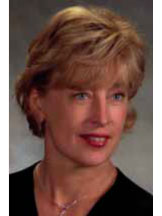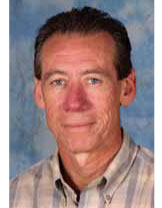Scoring High
Higher Learning Commission Affirms Saint Mary’s Strengths
By Susan M. Guibert
Changes, challenges, and growth have marked the decade since the Higher Learning Commission (HLC) made its last accreditation site visit to Saint Mary’s in 1996: the College named its first lay woman president and its first lay alumna president; the campus grew with the construction of several important buildings; new academic programs and centers were established; and, like many colleges, enrollment fluctuated.
Whether as an advancement or temporary growth pang, Saint Mary’s embraced each of these changes while remaining mindful of and true to its mission and identity. This year, it once again earned high marks from the HLC, the evaluating arm of the North Central Association of Colleges and Schools, one of six regional bodies charged with accrediting educational institutions in the United States.
After an exhaustive self-study and site visit by HLC evaluators, Saint Mary’s won praise for its success in meeting four of five major criteria: mission and integrity; preparing for the future; acquisitions, discovery, and application of knowledge; and engagement and service. The HLC lauded the College’s efforts in a fifth area—student learning and effective teaching—but recommended that it implement a systematic process for assessing what students are learning. Finally, the evaluation team shared a list of strengths that affirmed what Saint Mary’s is doing especially well.

“I think all members of the community resonate to the forwardlooking nature of the mission statement.”
— Laurel Thomas
Courier spoke recently with two key faculty members who were part of a self-study Saint Mary’s conducted and prepared for the HLC earlier this year. Patrick Pierce, former associate dean of the faculty and director of the Center for Academic Innovation, chaired two of the five criterion groups and coordinated all five; he also helped write the self-study. Laurel Thomas, associate professor of music, played a major role in writing the report.
Courier: The strength and effectiveness of Saint Mary’s mission is referred to several times throughout the self-study and the commission’s response. When an institution’s mission is often difficult to live out in practical terms, why does Saint Mary’s stated mission resonate with each of its constituent groups so well? What makes it so effective?
Pierce: I think that both the mission statement and statement of philosophy have received a great deal of attention as the result of a couple of factors. Members of the College community spent a great deal of time and thought on drafting the statement of philosophy, meant to elaborate on the mission statement. Then, revisiting the mission statement and thinking about it in light of the statement of philosophy additionally focused attention on the college’s mission. I think that members of the College community have long had a strong sense of the College’s mission, but the recent discussions have focused everyone’s attention on the mission more explicitly.
Thomas: I think all members of the community resonate to the forward-looking nature of the mission statement. While it articulates the history of the College, the mission statement also challenges us all to respond to and improve the world we live in now, in this moment of history.
Courier: Among the many strengths listed in the study is the “healthy and productive relationship with the community of South Bend and surrounding area.” With campus-community tensions so high at other colleges, how does Saint Mary’s accomplish this?
Thomas: Since the Sisters volunteered as nurses in the American Civil War, our school has gone out of its way to make connections with the community and the broader world. Those connections only strengthen through the years. Higher Learning Commission Affirms Saint Mary’s Strengths
Pierce: I agree. I think that Saint Mary’s College has long valued the contributions of its members to the South Bend/Mishawaka area. This may result from the strong sense of our mission that encourages people to see their lives and careers as involving more than their activities on campus. We live in the community and have an obligation to be responsible citizens in that community. Too often, colleges and universities only pay that obligation lip service.
Courier: Diversity in admissions and in student life is a topic that received some attention in the self-study and in the commission’s response, and is tied closely to the College’s emerging identity. Some strides have been made, and more work needs to be done. What are some steps being taken to broaden the student and faculty bodies?
Pierce: The College has taken three steps in this regard: First, President Mooney’s 2006 College Forum address talked about the hiring policy that says it’s the expectation that any group of final candidates brought to campus to interview will include at least one person from a historically underrepresented racial or ethnic group. Second, she and Daniel Meyer (vice president of enrollment management) have set an initial goal of having 15 percent of the student body be comprised of racial and ethnic minorities within five years. Third, she’s begun conversations with the Posse Foundation with the hope that Saint Mary’s can become a partner school with them. (The Posse Foundation recruits students from inner-city high schools in Boston, New York, Washington, D.C., Chicago, and Los Angeles. A college or university that partners with Posse commits to bringing 10 students a year from one of those cities to the campus).

“I think that the most formidable challenge for the future involves our attempt to become a college that reflects better the diversity of our society.”
— Patrick Pierce
Courier: What are you the most proud of in this study and the commission’s response? What poses the most formidable challenge for the future?
Pierce: I was most proud of the cooperation of faculty, staff, administration, and students in putting the self-study report together. Not surprisingly, I think that the text of the report reflected that sense of community.
Thomas: I am most proud of the many members of this community giving countless, selfless hours to the work of the report and of the College.
Courier: The last self-study and commission report took place 10 years ago. What do you envision for the next report in 2016?
Pierce: I think that the most formidable challenge for the future involves our attempt to become a College that reflects better the diversity of our society. I think that it’s very good news that the College has already taken significant steps in that direction.
Thomas: I think that in 2016 we will be reporting, with heads held high, that our efforts in the area of diversity have reaped many rewards. The class picture in 2016 will much more accurately represent the population of the world.

